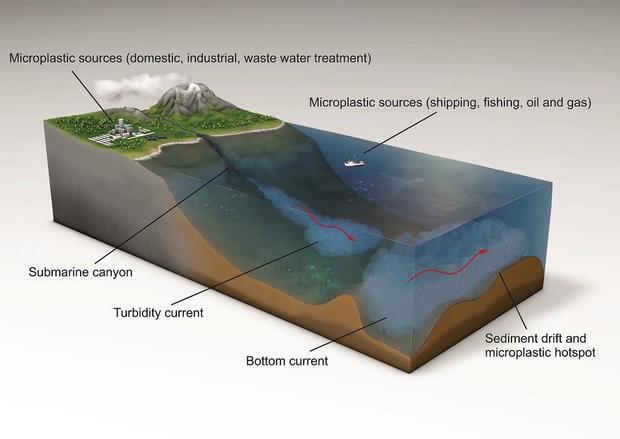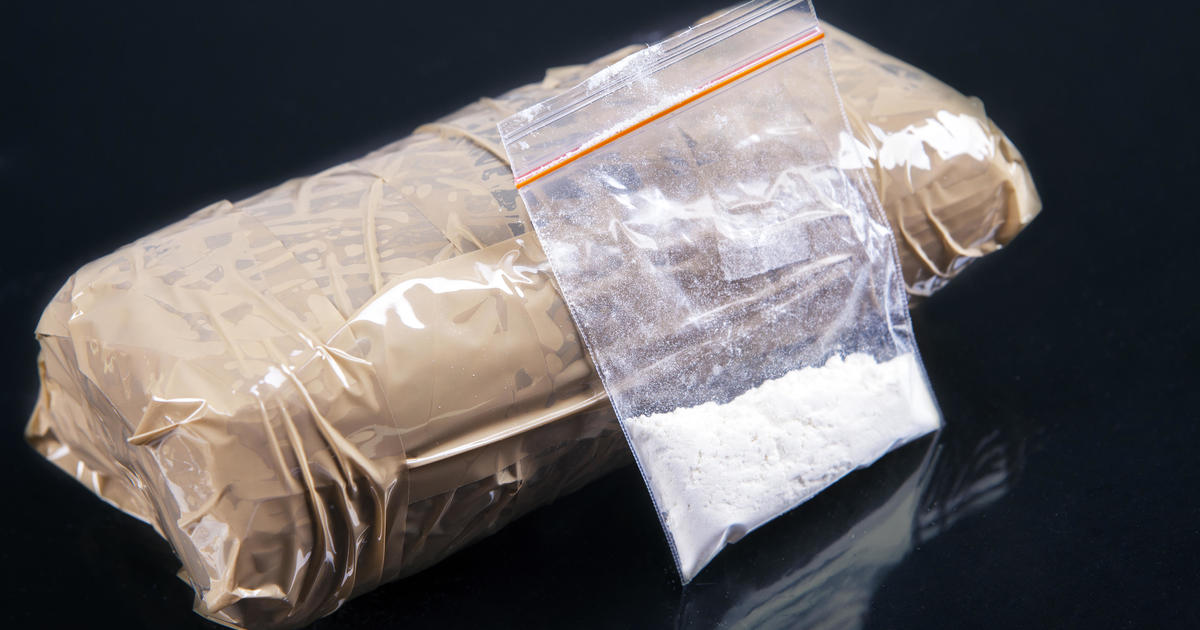Researchers uncover highest-ever amount of microplastics on ocean floor
Researchers have uncovered the highest-ever concentration of microplastics on the seafloor. According to a new study in the journal Science, scientists recently found 1.9 million pieces in an area of about 11 square feet in the Mediterranean Sea.
Over 10 million tons of plastic waste enter oceans each year — but the visible floating plastic that has led to anti-straw and anti-plastic bag movements accounts for less than 1% of the ocean's total plastic.
The other 99% is thought to live in the deep ocean — and the new study helps to explain how it ends up there. Researchers were able to track deep-sea currents and show how they act like "conveyor belts" to transport microplastics across the seafloor.
To conduct the study, a team of scientists collected sediment samples from the bottom of the Tyrrhenian Sea off the coast of Italy before extracting and analyzing the plastic within it. After studying deep ocean currents and mappings of the sea, the team was able to demonstrate how currents distribute microplastics along the seafloor.
Researchers said "microplastic hotspots" occur when flowing seafloor currents concentrate plastics in large sediment accumulations. They are essentially the deep-sea counterparts of "garbage patches" that collect on the ocean surface and wind up on beaches.
These "garbage-patches" have been widely researched, but researchers were surprised at what they found when they traveled to the depths of the sea.
"Almost everybody has heard of the infamous ocean 'garbage patches' of floating plastic, but we were shocked at the high concentrations of microplastics we found in the deep-seafloor," lead author Dr. Ian Kane from The University of Manchester said in a press release.
The microplastics found by researchers were mostly made up of tiny clothing fibers, which can easily enter oceans if not filtered out properly in wastewater treatment plants.
Along with microplastics, these currents also trap oxygenated water and nutrients, meaning important seafloor ecosystems are absorbing the plastics — possibly ingesting and passed them up the food chain.
Scientists hope their findings will help to predict the locations of other microplastic hotspots and lead to further research on their impacts on marine life in oceans around the world.
"Our study has shown how detailed studies of seafloor currents can help us to connect microplastic transport pathways in the deep-sea and find the 'missing' microplastics," said co-lead author Dr. Mike Clare of the National Oceanography Center. "The results highlight the need for policy interventions to limit the future flow of plastics into natural environments and minimise impacts on ocean ecosystems."
Researchers said the amount of plastic is so high, it has essentially become part of the makeup of the ocean floor — a potentially devastating threat to biodiversity.
"It's unfortunate, but plastic has become a new type of sediment particle, which is distributed across the sea floor together with sand, mud and nutrients," said Dr. Florian Pohl from Durham University. "Thus, sediment-transport processes such as seafloor currents will concentrate plastic particles in certain locations on the seafloor, as demonstrated by our research."





